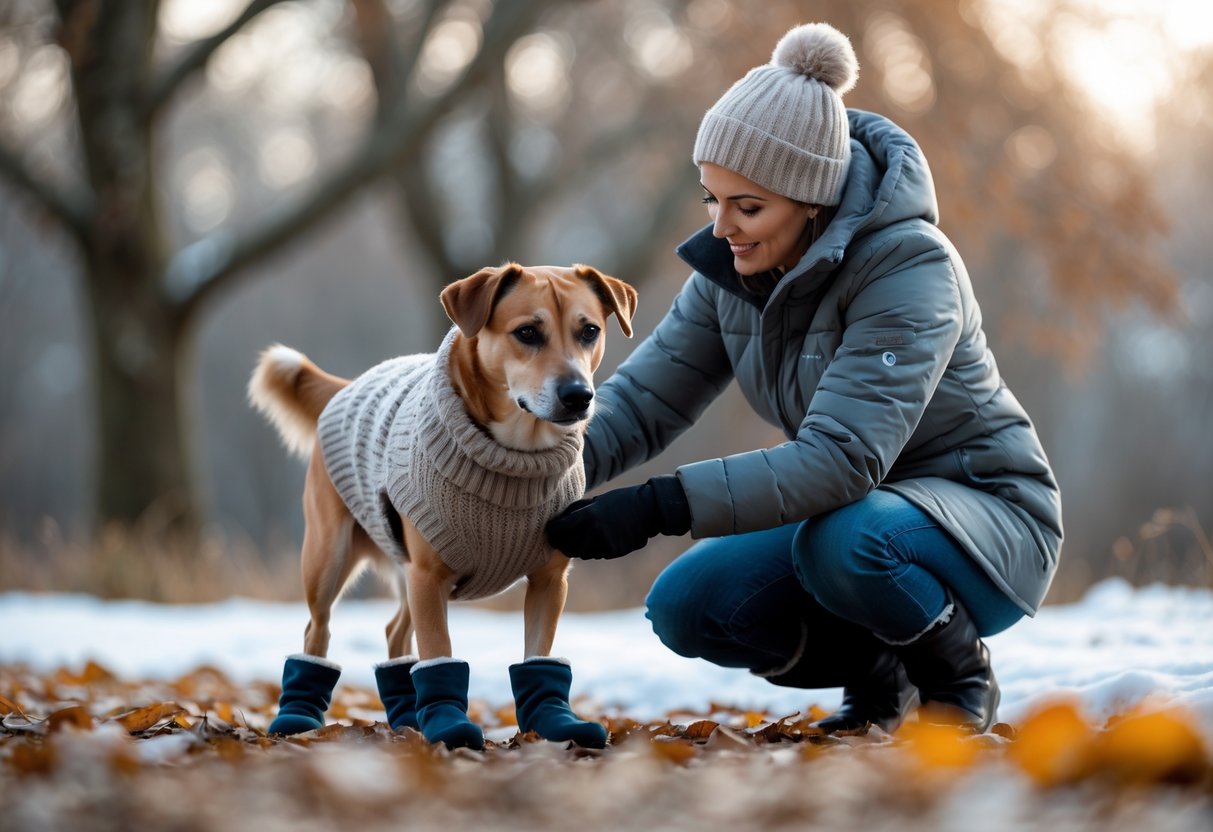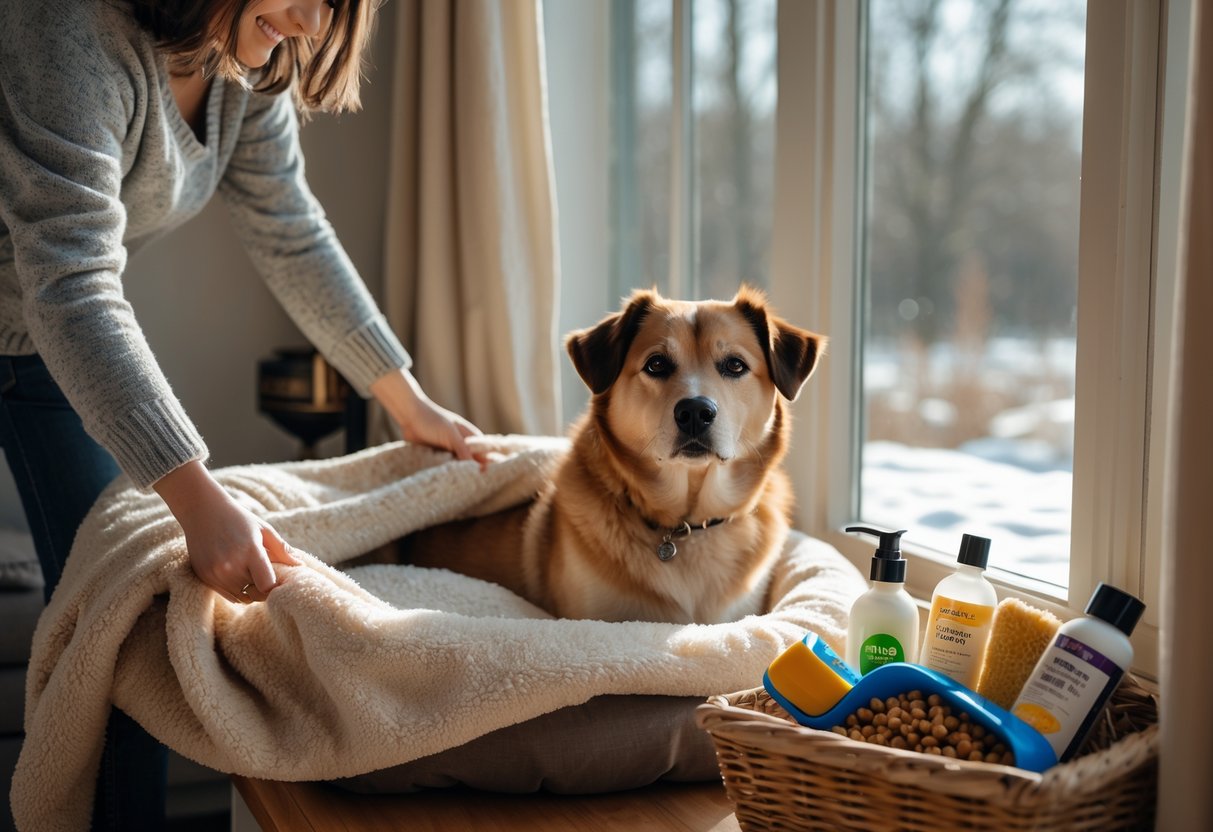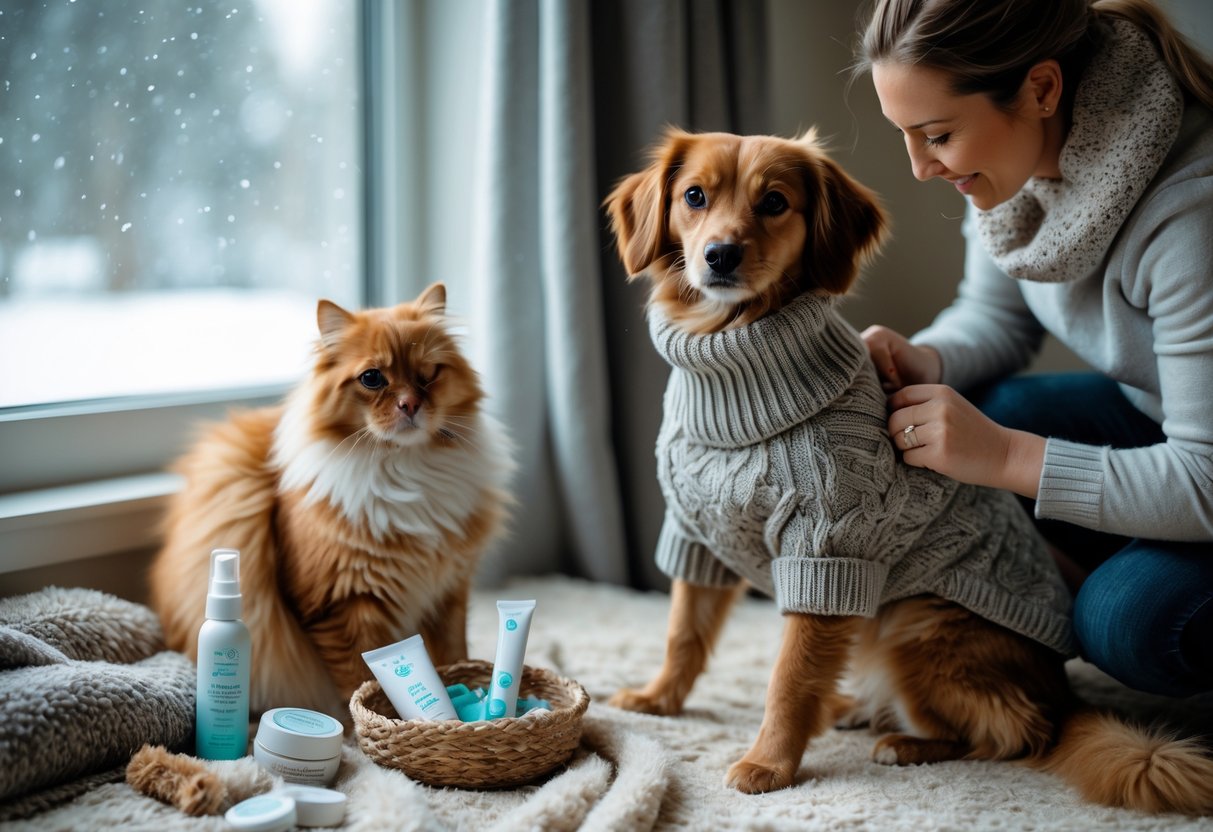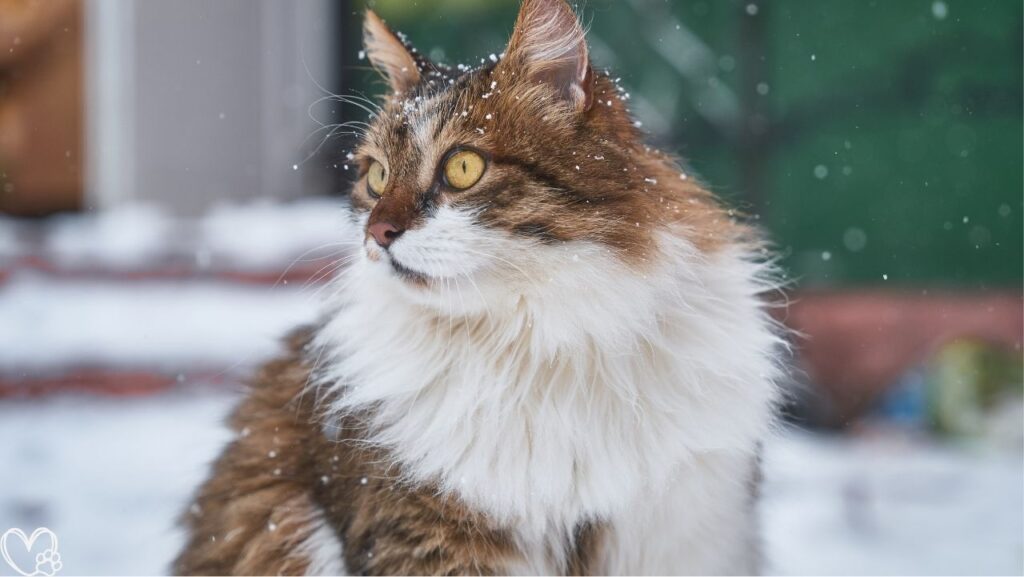Winter brings its own set of challenges for your pet’s health and comfort. As temperatures drop, your furry friend needs a bit of extra attention to stay safe from the cold, frostbite, and even some indoor hazards.
Getting your pet ready for winter means tweaking their diet, grooming routine, exercise, and living space to shield them from the chill and those sneaky seasonal risks.

Keep an eye out for hidden dangers like antifreeze poisoning and parasites—they don’t always take a break in winter. A fall wellness check with your vet can catch issues early and make sure your pet’s ready for the season ahead.
Getting ahead of these things before winter really sets in helps your pet stay healthy and comfortable. So, what should you actually do? Let’s break it down.
Seasonal Pet Care Essentials Before Winter
As the cold creeps in, focus on keeping your pet warm and safe from winter dangers. Adjusting indoor spaces and taking some basic health precautions will go a long way.
The change from fall to winter can be stressful for pets, so managing that shift thoughtfully can help prevent illness and discomfort.
Preparing Your Pet for Colder Temperatures
First up, check if your pet’s coat is thick enough for the cold. Short-haired or smaller pets might need a sweater or jacket for outdoor adventures.
When it’s freezing, limit outdoor time—especially for puppies, seniors, or pets with health issues. They just can’t handle the cold as well.
Winter often means dry skin for pets. Try a moisturizing pet shampoo and brush regularly to keep their fur in good shape.
Offer warm bedding in a draft-free spot. It’s a small thing that makes a big difference in comfort.
Keep an eye out for shivering, lethargy, or your pet lifting their paws off icy ground. If you notice these signs, it’s time to head indoors.
Winter-Proofing Living Spaces for Pets

Keep your home warm, but be careful with heaters and fireplaces—pets can get too close and hurt themselves. Block drafts with weather stripping or heavy curtains where you can.
Set up a cozy spot with soft blankets or maybe a heated pet bed. Just don’t put bedding right next to radiators or vents, since that can dry out their skin and fur.
Antifreeze and ice-melting chemicals are super toxic. Store them out of reach, no exceptions.
Check water bowls often to make sure they’re not frozen. If you live somewhere really cold, a heated bowl isn’t a bad idea. Hydration still matters in winter.
Maintaining Pet Health With Preventative Measures
Book a vet visit to update vaccines and talk about any seasonal issues, like arthritis or breathing problems. The cold can make these worse.
Ask your vet about keeping up with flea, tick, and heartworm prevention. Some pests are surprisingly persistent, even when it’s chilly.
Depending on how much time your pet spends outside, you might need to bump up their calories. But don’t overdo it—nobody wants a pudgy pup come spring.
If walks are shorter, get creative with indoor exercise. Toys and games keep your pet moving and help avoid winter weight gain.
Transitioning From Fall to Winter Safely
Let your pet adjust to the season by gradually reducing outdoor activity. Sudden changes can throw them off.
Check paws for cracks or injuries from ice and salt. Booties or pet-safe deicers can help protect those delicate pads.
Late fall allergies can still bug your pet, so keep your home clean and as dust-free as possible.
Brush more often as their coat thickens for winter, but skip full baths right before heading outside—wet fur chills fast.
Critical Winter Wellness Strategies for Pets
Winter’s tough on pets, and it’s easy to overlook the little things that keep them healthy. Their paws, their comfort, and their mental health all need some extra thought right now.
Protecting Paws from Ice, Salt, and Irritation

Sidewalks get coated in ice and salt, which can really mess up your pet’s paws. Salt and ice melt chemicals are harsh and drying.
Put on a paw balm before and after walks to create a barrier and keep paws moisturized. It helps more than you’d think.
Check paws for cracks or redness, and wipe them with a damp cloth after walks. If your pet will tolerate them, booties are a solid option for longer outings.
Trim nails regularly to avoid extra stress on paw pads. If you can, steer clear of heavily salted or icy routes.
Adjusting Flea and Tick Prevention Routines
Don’t assume fleas and ticks disappear in winter. They can hang around indoors or hitch a ride on wildlife.
Stick with your flea and tick preventatives all winter. Some products work year-round and help protect against diseases like Lyme.
Regular grooming helps you spot pests early. If your pet’s still going outside, stay alert for unwanted hitchhikers.
Supporting Pet Comfort and Mental Stimulation
With more time indoors, your pet needs a warm, cozy spot—blankets or a comfy bed away from drafts work wonders. Make sure their resting area stays dry since dampness can really lower their comfort and immunity.
Don’t forget about mental stimulation. Puzzle toys, training sessions, or just some extra playtime keep boredom and anxiety at bay.
If your pet’s less active, you might want to tweak their feeding schedule. But always keep fresh water available, even if you have to break some ice to do it.
Scheduling Veterinary Visits and Health Checks

A winter wellness check with your vet really helps your pet stay healthy when the cold rolls in. Your vet can look at weight, coat condition, and those annoying arthritis flare-ups that always seem worse in winter.
It’s worth talking about your pet’s specific needs, like vaccinations and parasite control. Sometimes there are seasonal medication tweaks that make a big difference.
Early detection of health problems? That can save a lot of worry and keep things from getting out of hand.
Winter visits are also a good excuse to revisit your pet’s diet. Exercise routines might need a little update too, especially if your pet’s less active when it’s freezing outside.
Honestly, regular check-ups just let you relax a bit, knowing your pet’s care is dialed in for the season.
In the end, a little planning goes a long way. Your furry friend deserves to feel their best, even when it’s chilly out.
Conclusion
Winter doesn’t have to be tough on your pets if you’re a little proactive. Pay attention to their needs, make a few adjustments, and keep an eye out for hidden hazards. With a bit of effort and some common sense, you and your furry friend can enjoy the season in comfort and good health. Honestly, isn’t that what we all want?



[…] it spreads and which prevention tools actually work. Using the right medication and keeping up with year-round protection makes all the […]